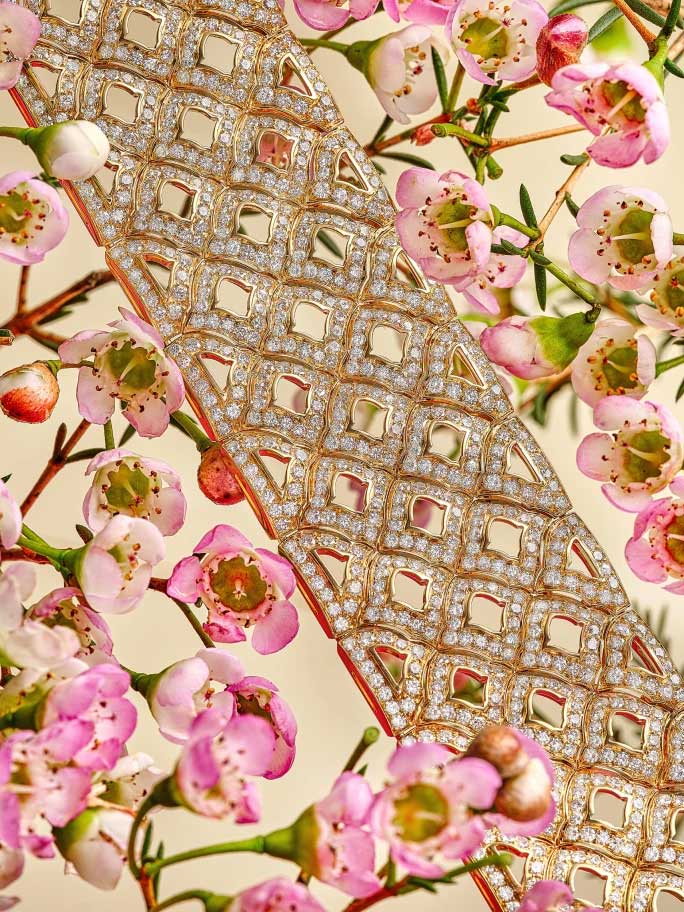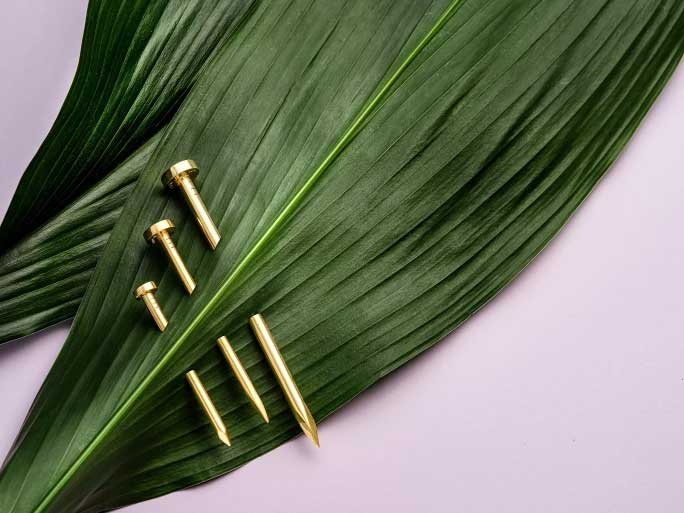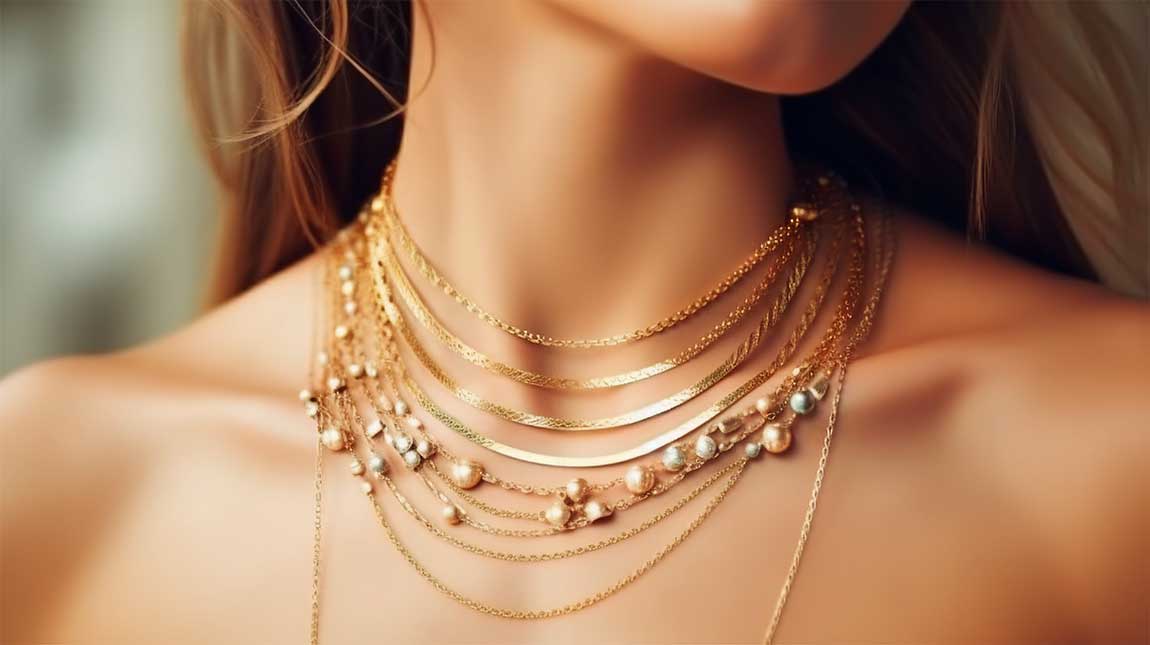Illustrated with pieces from Hong Kong’s recent Important Jewels from The Luxury Edit, we take a dive into the stunning world of yellow gold, from the time of ancient civilisations to the present day.
Gold has played a starring role in the history of human civilisation since it was first discovered thousands of years ago. It has influenced how we live and operate as an economy, and the culture of every society. The power and allure of gold, however, goes beyond its monetary value. Not only is it regarded as a symbol of affluence, but also as an object of beauty and desire.
Evidence suggests that it was the ancient Egyptians who were the first to mine this precious natural element. Its purity and radiant colour meant that it was associated with the sun god Ra and the concept of eternal life. Gold was also closely connected to the idea of the divine which is why it was used frequently in ancient Egyptian rituals. In fact, one of the most notable gold pieces created during this time was the highly intricate funerary mask made for legendary Tutankhamun, still regarded today as one of the greatest examples in the history of gold craftsmanship.
Gold’s mystical qualities defined how it was used for many centuries. It was crafted into cultural artefacts and religious items by various faiths, while places of worship across the globe were decorated lavishly with gold or gilded statues, frescoes and images.
What gold became most prized for, however, was its decorative abilities. Its properties – including a durable and non-corrosive natural lustre – made it an ideal material for jewellery and ornaments. These pieces would later become a status symbol for elite men and women who would adorn themselves with accessories made from the precious metal.

Over the centuries, cultures across the world would immortalise gold as a symbol of wealth and fortune. Gold ornaments were worn to mark important events and celebrations including weddings where gold was revered as a symbol of purity, prosperity and abundance. Brides in India and China were often adorned in pure gold jewellery in hopes that it would bring them a healthy and happy future.
As gold jewellery became more popular globally, it led to the development of new and innovative crafting techniques that added an artistic flair to goldsmithing. Many of these were incredibly detailed, such as the ancient Egyptian technique known as fillagree work where delicate gold wires are used to create intricate designs. Another skill called granulation saw small spheres called granules used to decorate a jewel’s surface. The Romans expanded their oeuvre by setting gold with semi-precious and precious stones, and later pearls and enamel during the Byzantine era. India’s Mughal Empire in the 16th century saw the emergence of the now iconic Mughal style which featured gold pieces accented with stunning enameling techniques.
The American gold rush in the 19th century and the discovery of gold deposits in Africa meant that gold became more abundant. Technical advancements in the Industrial Revolution made gold jewellery easier to manufacture in mass quantities, raising accessibility and forever changing societies, although the symbolic association of gold with privilege and wealth remained.
By the 20th century, creators from all disciplines, ranging from art and fashion to design, were experimenting with gold as a material. The jewellery industry in turn looked to these worlds as their muse. Most regarded are the Art Noveau and Art Deco periods where bold geometric gold jewellery inspired by architecture became highly popular.
The 1950s saw jewellery houses collaborating with designers and goldsmiths to add an element of artistry and design to their offerings, bringing the jewellery industry into yet another new and fashionable era. Italian jewellers Buccellati and French maison Cartier were among the most innovative when it came to gold jewellery. Mario Buccellati (1891 – 1965) began to elevate and revive ancient goldsmithing and engraving skills, including their now signature Rigato technique. This involves cutting a series of thin parallel lines onto the surface of the gold to create a sheen effect. As a result, the gold takes on the appearance of a fabric such as linen, as seen on Buccellati’s stunning yellow gold, diamond and emerald cuffs.
![[TOP TO BOTTOM] MARIO BUCCELLATI EMERALD AND DIAMOND CUFF BRACELET | ESTIMATE: 280,000 - 350,000 HKD; ALDO CIPULLO ‘JUSTE UN CLOU’ BANGLE, CIRCA 1973 | ESTIMATE: 120,000 - 180,000 HKD; MARIO BUCCELLATI DIAMOND CUFF BRACELET | ESTIMATE: 200,000 - 300,000 HKD](https://www.80degreestoday.com/wp-content/uploads/2024/02/gold-bracelets.jpg)
Yellow gold continued to be a big trend in the 1960s but jewellery designers upped their game by experimenting and embracing textures. Many of the gold pieces created during this period featured textured gold and hammered surfaces which lent itself perfectly to the bold, geometric shapes that were popular during the time.

In the 1970s, jewelry designer Aldo Cipullo (1935 – 1984) would create some of the period’s most iconic contemporary gold pieces, many for Cartier. Although he is best known as the mastermind behind the maison’s best-selling Love bracelet, he also created a series of sleek, sculptural styles from yellow gold that would make the house a go-to for its unique and modern designs.
Cipullo had a talent for taking inspiration from everyday shapes and motifs which he would then transform into desirable jewels. In 1971 he designed another seminal piece for the house, the Juste un Clou bracelet – which means “just a nail” – combining a strong masculine motif with a chic, feminine approach. The designs that followed were equally striking, as evidenced by his tongue-in-cheek “I Love You” bracelet, presenting a playful yet luxurious token of love.
As they say, all that glitters is gold and by the 1980s jewellery took on the excesses and maximalism that defined much of the period. This more is more approach was evident as yellow gold was the material of choice for the fabulous. As women joined the workplace, modern in-your-face gold styles emerged including oversized hoop earrings, chains, brooches and clip on earrings. For those that could afford it, names like Hermès and Cartier popularised gold and diamond encrusted styles including earrings and thick cuffs which were embellished using the versatile pavé technique, which gives the impression that the surface is covered with gemstones.
From ancient and traditional to contemporary styles, yellow gold has stood the test of time as symbol of culture, wealth and beauty. There is no doubt that this coveted material will continue to influence and inspire creators for many generations to come.
POSTED WITH PERMISSION. COPYRIGHT SOTHEBY’S. Click to read original article.


